
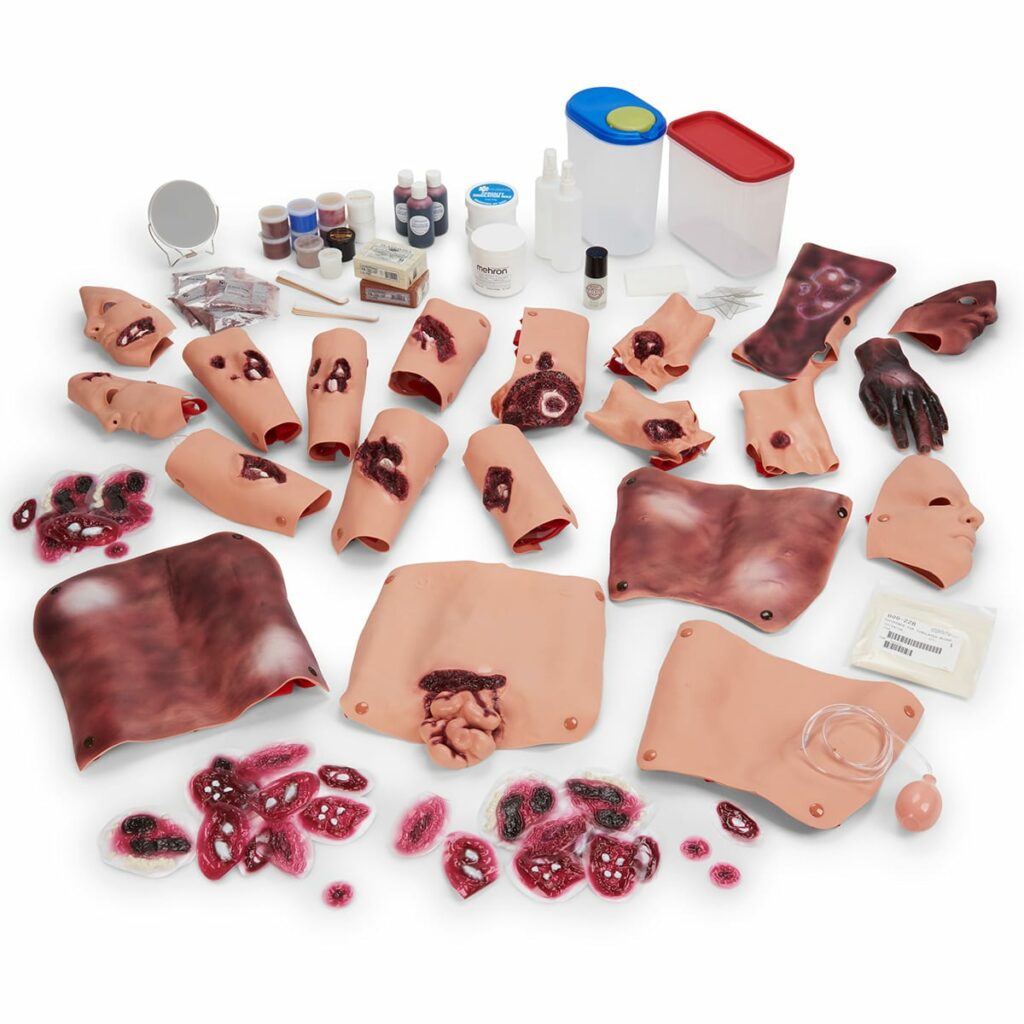
Medical simulation plays a vital role in training healthcare professionals, allowing them to practice and refine their skills in a controlled environment. Realism is a crucial aspect of effective medical simulation, as it enhances the learning experience and prepares healthcare providers for real-life scenarios. One technique that has revolutionised the field of medical simulation is moulage. Moulage, the art of creating realistic wounds, injuries, and other physical conditions, brings a new level of authenticity to medical training. This article explores moulage and its ability to enhance realism in medical simulation, providing a comprehensive guide on its tools, techniques, benefits, challenges, and successful integration into medical education.
Moulage is the art of creating realistic injuries and medical conditions for training purposes. In other words, it’s what makes medical simulations look and feel like the real deal.
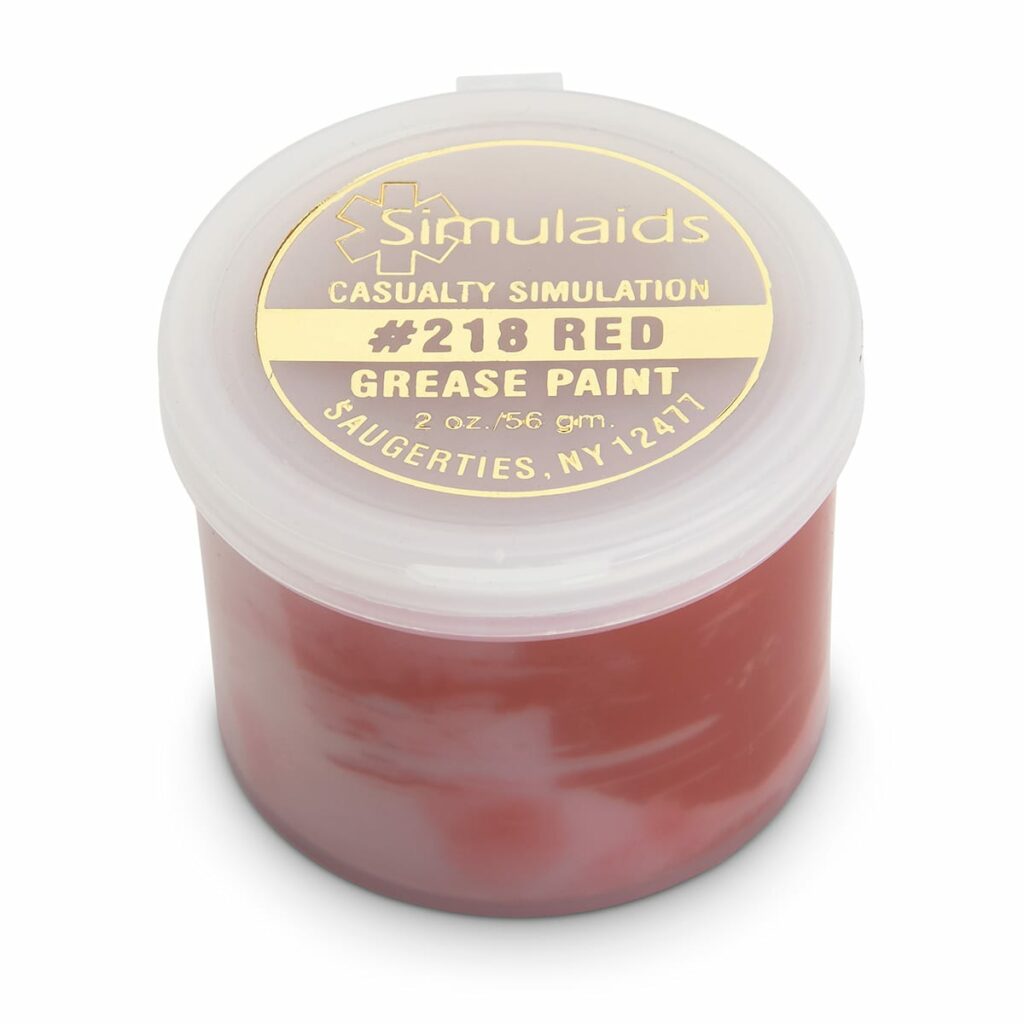
Believe it or not, moulage has been around for centuries. In the past, wax and other materials were used to create realistic wounds for medical students to practice on. Fast forward to today, we have more advanced techniques and materials at our disposal. Moulage has come a long way, evolving into a vital tool in medical education, helping students and professionals alike hone their skills in a realistic environment.
Let’s face it, medical training can be intense. It’s a world of life and death decisions, and the stakes are high. That’s why realism is crucial. When students are exposed to realistic scenarios, they develop the ability to think on their feet, make quick decisions, and handle the pressure that comes with the job. Realism helps bridge the gap between theory and practice, preparing medical professionals for the challenges they’ll face in the real world.
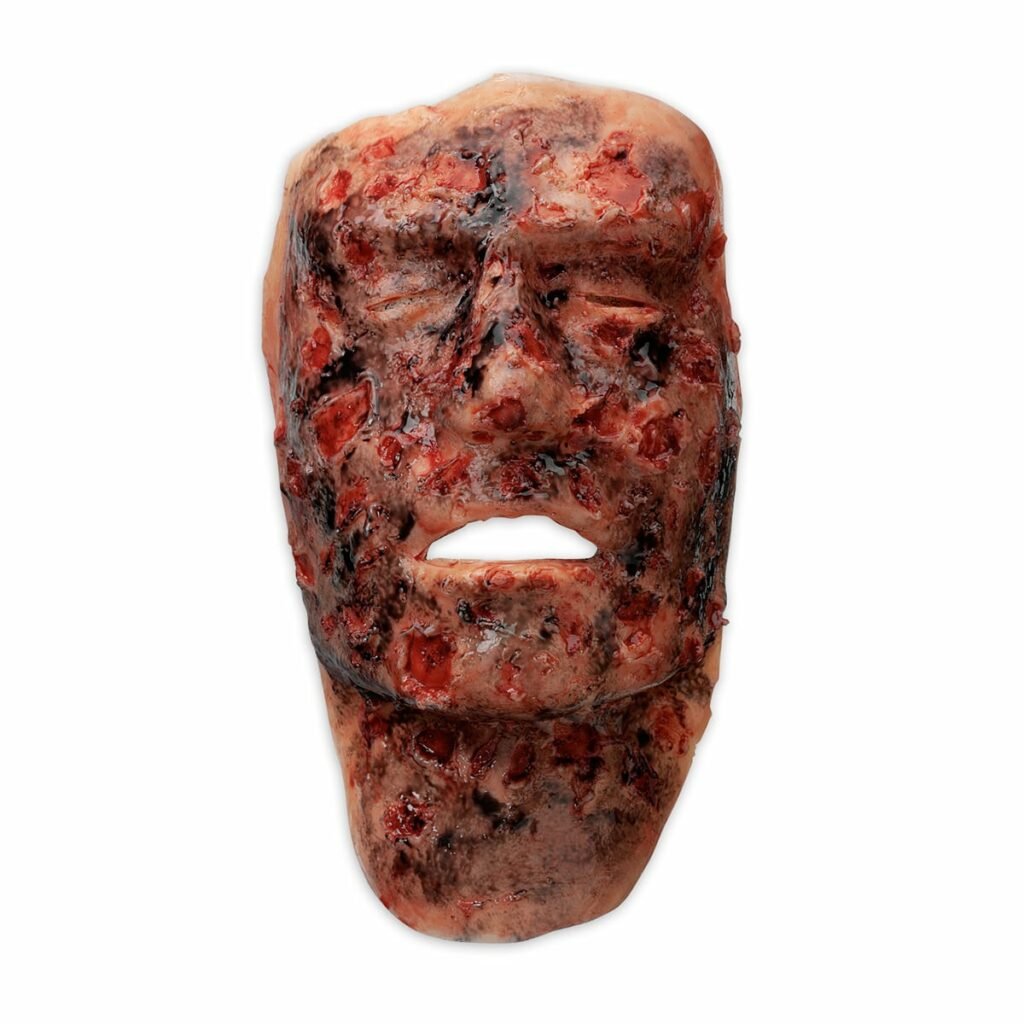
So, what exactly does realistic moulage bring to the table? For starters, it helps create an immersive learning experience. When students encounter lifelike wounds, burns, and trauma, they’re forced to think critically and apply their knowledge in a practical setting. Additionally, realistic moulage enhances communication and teamwork skills. It enables students to work together, prioritise tasks, and provide a cohesive approach to patient care.
Creating realistic moulage doesn’t require a secret lab or a magician’s toolkit. In fact, you can achieve impressive results with simple supplies like makeup, fake blood, and prosthetic materials. These readily available items can help you create realistic wounds, bruises, and even simulate the effects of diseases or medical conditions.
To achieve a truly convincing moulage, attention to detail is key. You’ll want to match the skin tone, texture, and coloration of the simulated injury as closely as possible to reality. This can be done through a variety of techniques, such as using makeup and prosthetics, and even incorporating elements like sweat, tears, or mucus to add that extra touch of authenticity.
Creating realistic wounds, burns, and trauma is an art form in itself. From open fractures to severe burns, moulage artists have mastered the art of illusion. By using different materials, such as silicone, gelatine, and even food products, they can simulate various injuries with astonishing accuracy. The goal is to make the simulation look and feel real, allowing students to practice their skills in a safe but lifelike setting.
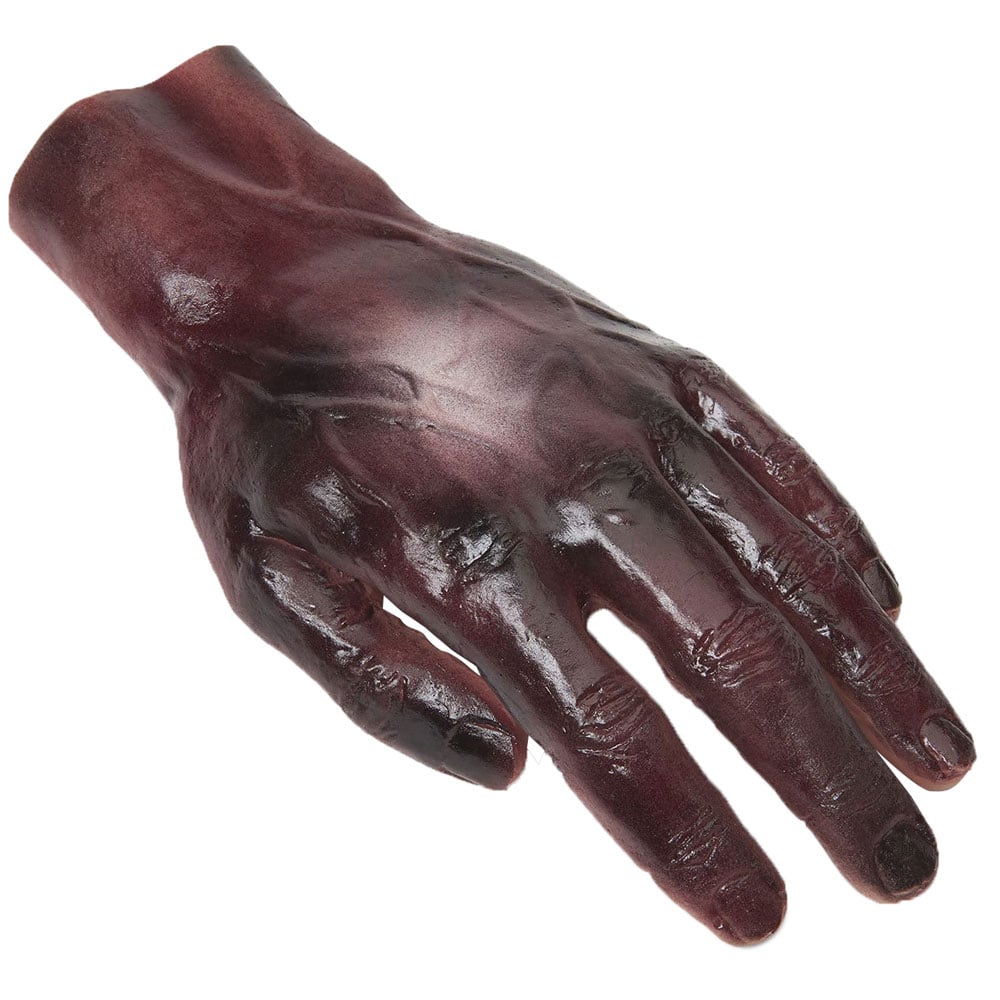
When it comes to incorporating moulage into medical simulations, planning and designing scenarios are crucial. You’ll want to consider the learning objectives, the skills you want to focus on, and the resources available. By carefully crafting scenarios that incorporate this, you can maximise the educational impact and provide an engaging learning experience for participants.
While moulage adds a touch of realism to medical simulations, safety should always come first. It’s important to consider infection control measures and ensure that all materials used are safe and non-toxic. Proper hygiene practices, such as sanitising equipment and disposing of contaminated materials, should always be followed to protect both participants and educators involved in the simulation.
Medical simulation has become an integral part of healthcare education, allowing learners to practice and enhance their skills in a safe and controlled environment. Realistic moulage, the art of creating lifelike wounds and injuries, takes medical simulation to the next level. By engaging learners with real-world simulations, moulage scenarios provide a dynamic learning experience that goes beyond textbook knowledge.
Gone are the days of straightforward manikin-based simulations. Realistic moulage scenarios immerse learners in situations that closely resemble actual patient encounters. From simulated car accident victims to gunshot wounds, moulage creates a sense of urgency and realism that captivates learners. By exposing them to lifelike injuries, moulage prompts critical thinking and decision-making under pressure, preparing learners for the unpredictable nature of healthcare.
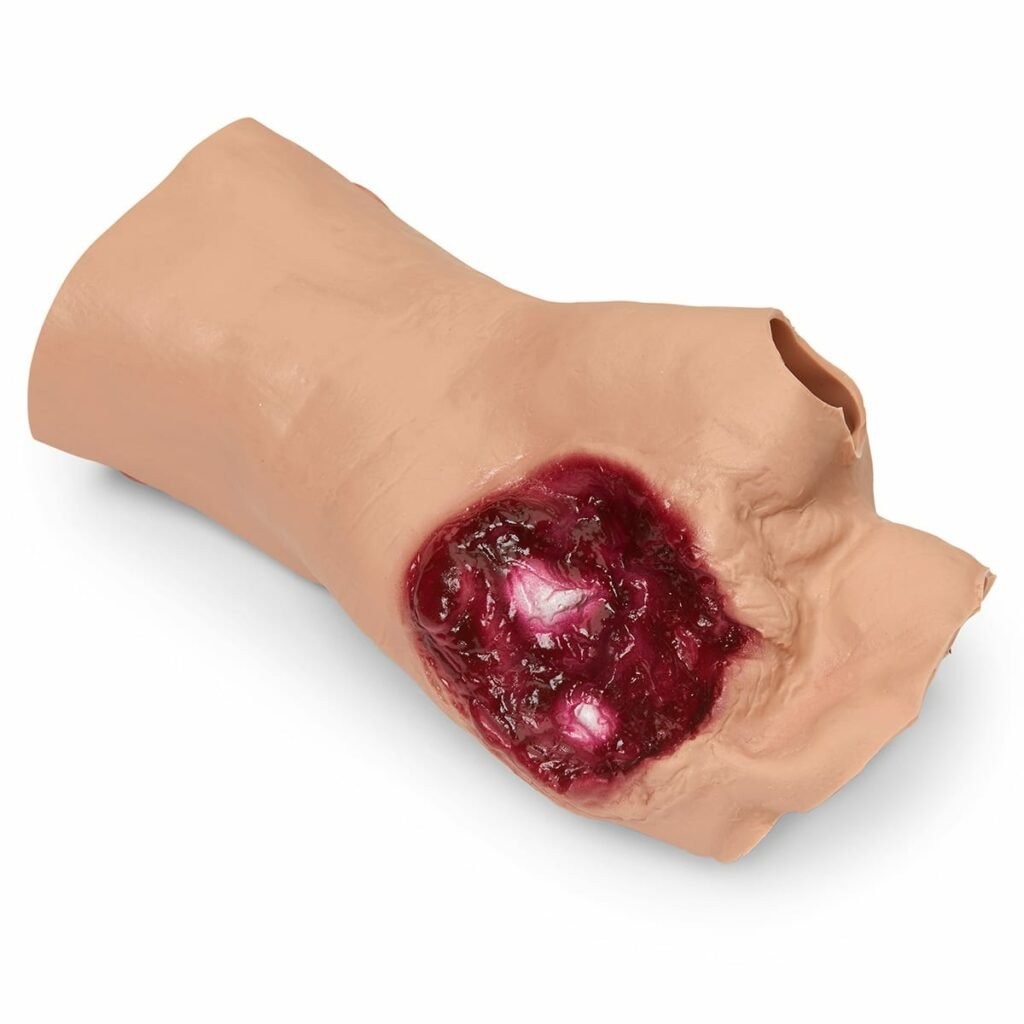
Realistic scenarios push learners to think on their feet, forcing them to assess, diagnose, and treat patients in a simulated high-stakes environment. These scenarios challenge learners to prioritise tasks, make quick decisions, and adapt their approach based on the evolving situation. By honing these critical thinking and decision-making skills, moulage enhances learners’ ability to provide timely and effective care in real-life situations.
Healthcare is a team effort, requiring effective collaboration and communication among different healthcare professionals. Realistic moulage scenarios provide an opportunity for learners from various disciplines to come together, simulate interprofessional collaboration, and practice their communication skills. By working together to assess and treat simulated patients, healthcare professionals build teamwork and communication skills that are essential for delivering quality patient care.
While moulage offers numerous benefits in medical simulation, there are challenges and limitations to its implementation that need to be addressed.
Creating realistic moulage can require significant resources, including materials, specialised training, and dedicated staff. Budget constraints may limit the extent to which moulage can be incorporated into medical education programs. Institutions must carefully allocate resources to ensure the effective use of moulage without compromising other aspects of healthcare education.
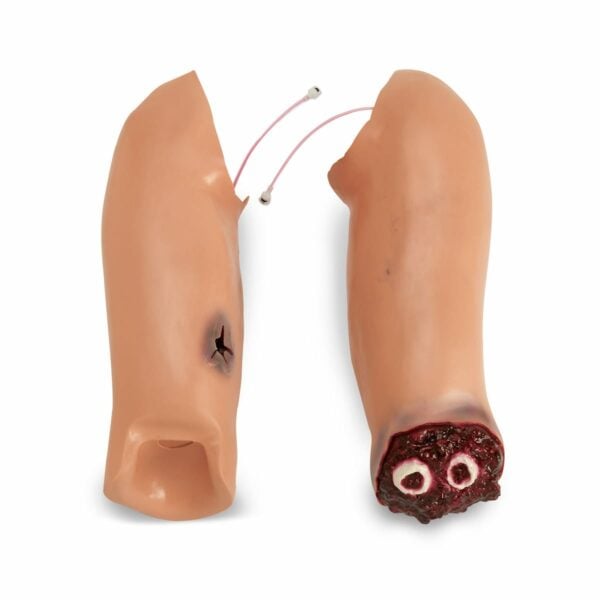
Moulage is an art that requires skill and practice. Educators and simulation technicians need adequate training to create realistic moulage, ensuring that wounds and injuries accurately reflect the desired learning objectives. Continual training and practice are crucial to maintaining proficiency in moulage techniques and keeping up with emerging trends and advancements in the field.
To counter this, an easier option is to purchase ready made moulage items, either as standalone products or as part of a moulage kit. Medical training device companies such as Simulaids have a dedicated moulage range with an extensive catalogue of products replicating injuries of all types and severities.
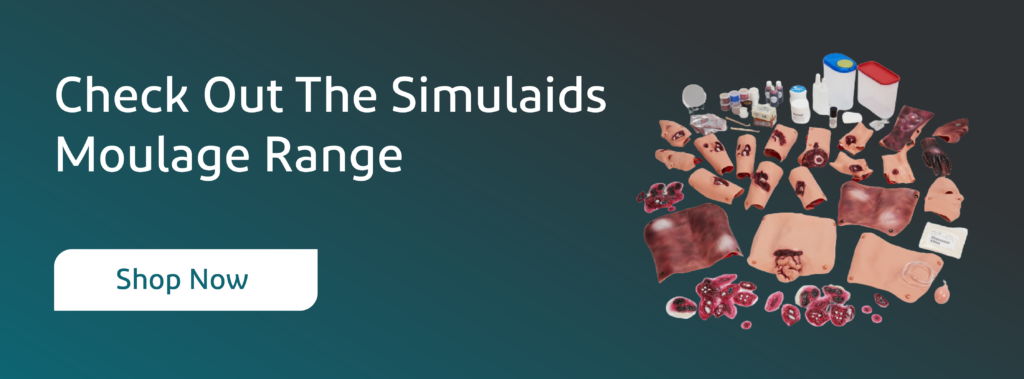
Realistic moulage scenarios take medical simulation to new heights, enhancing learning outcomes and preparing healthcare professionals for real-life challenges. By engaging learners in real-world simulations, fostering critical thinking and decision-making, promoting interprofessional collaboration, and addressing challenges and limitations, moulage proves to be a valuable tool in medical education.
As moulage continues to evolve, its impact on medical simulation will undoubtedly shape the future of healthcare education. So get your fake blood and makeup kits ready, because moulage is here to stay! By creating lifelike wounds and conditions, moulage allows healthcare professionals to practice critical thinking, decision-making, and communication skills in a realistic environment. With a careful understanding of the tools, techniques, and best practices, moulage can be successfully incorporated into medical education, complementing traditional training methods and preparing healthcare providers for the challenges they may encounter in real-life scenarios. As technology advances and innovation continues to shape medical simulation, moulage remains an essential component in creating immersive and effective learning experiences for the healthcare professionals of tomorrow.

Sign up to our newsletter
Sign up to our newsletter for the latest product updates, announcements, and insights.
© Simulaids 2024. All Rights Reserved.